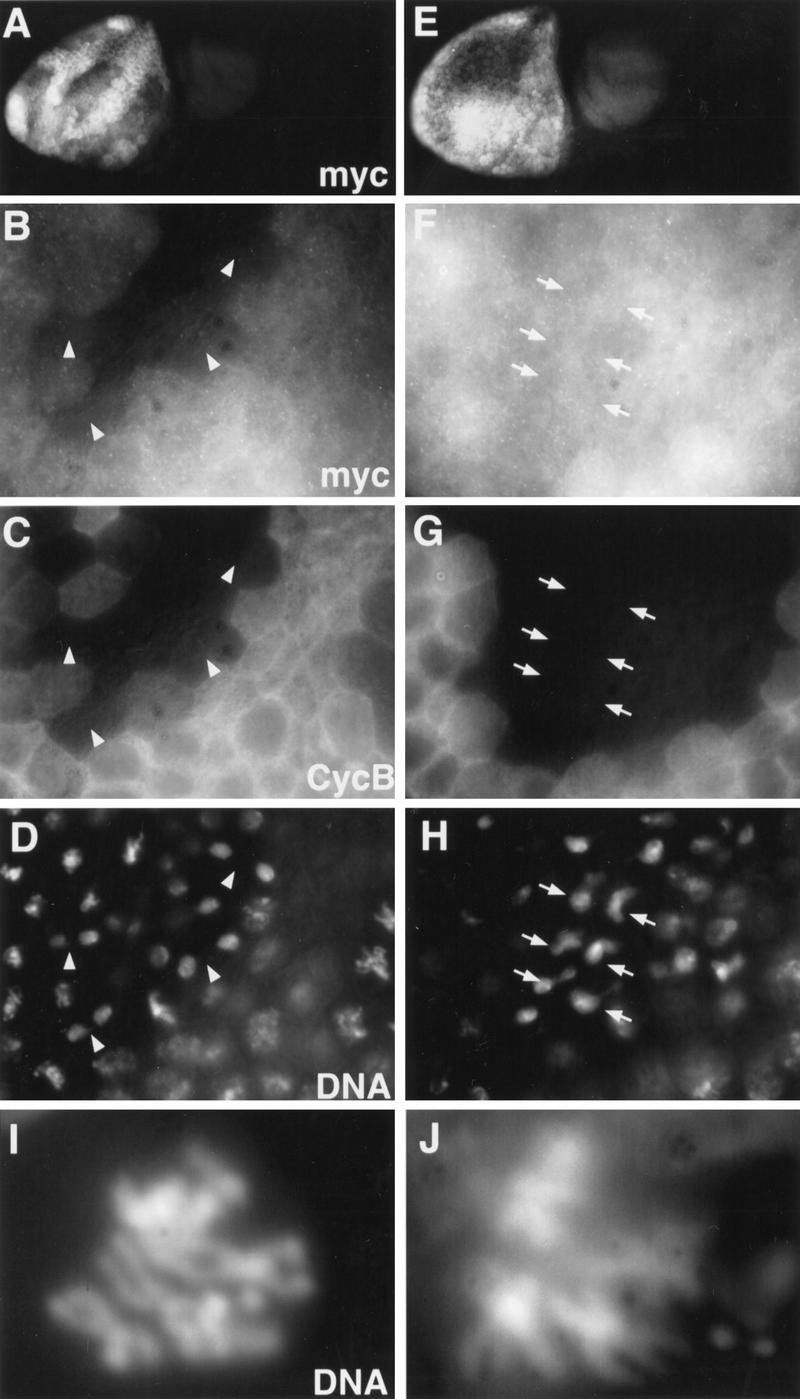Figure 3.
PIM with mutations in the destruction box motif is stable in mitosis and inhibits sister chromatid separation. nos–GAL4–GCN4–bcd3′UTR was used to express either wild-type PIM with carboxy-terminal myc epitopes (UAS–pim–myc; A–D) or PIM with carboxy-terminal myc epitopes and a mutant destruction box (UAS–pimdba–myc; E–H) in the anterior region of gastrulating embryos. Embryos (A,E) were fixed and labeled with antibodies against the myc epitope (myc; A,B,E,F), Cyclin B (CycB; C,G) and a DNA stain (DNA; D,H). Arrowheads in the high magnification views of a head region indicate normal anaphase and telophase figures (B–D), while arrows mark abnormal “metaphase” plates with decondensing chromosomes (E–H) in regions that lack anti-Cyclin B labeling and thus have progressed beyond the metaphase–anaphase transition. UAS–pimdba–myc I.1; UAS–pimdba–myc III.1 embryos for control (I) and UAS–pimdba–myc I.1/+; UAS–pimdba–myc III.1/da–GAL4 embryos (J), in which mitosis 15 is the first division affected by the expression of nondegradable PIM, were incubated in colcemid at the stage of mitosis 16 before preparation of mitotic chromosome spreads stained for DNA. Diplo-chromosomes (J) indicating the failure of sister chromatid separation during mitosis 15 were not observed in controls (I).

